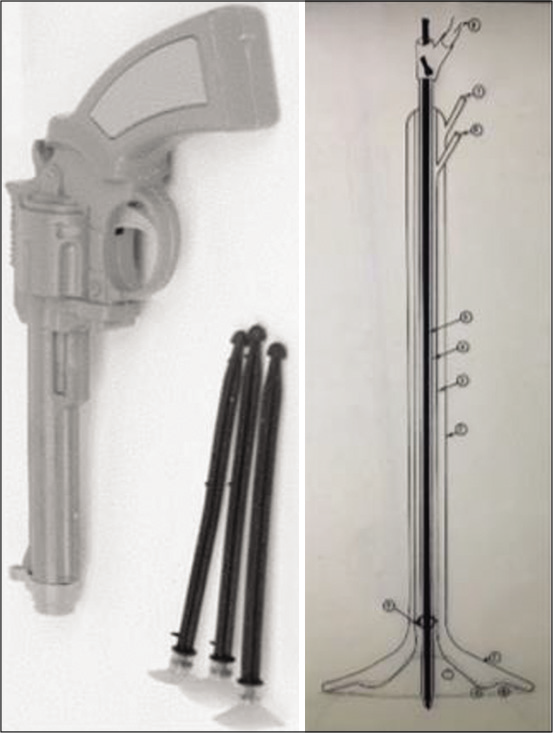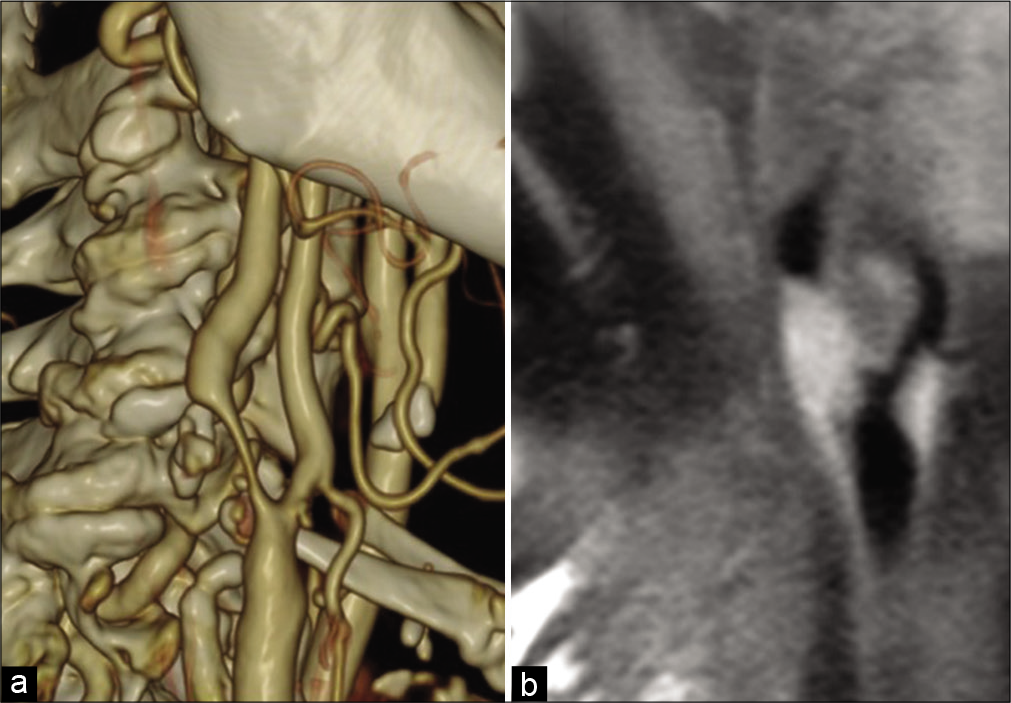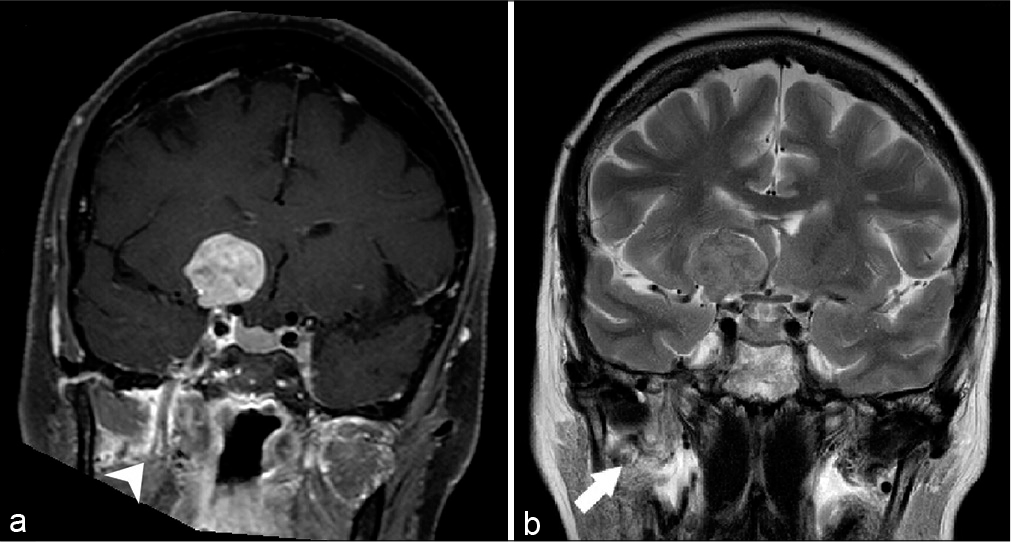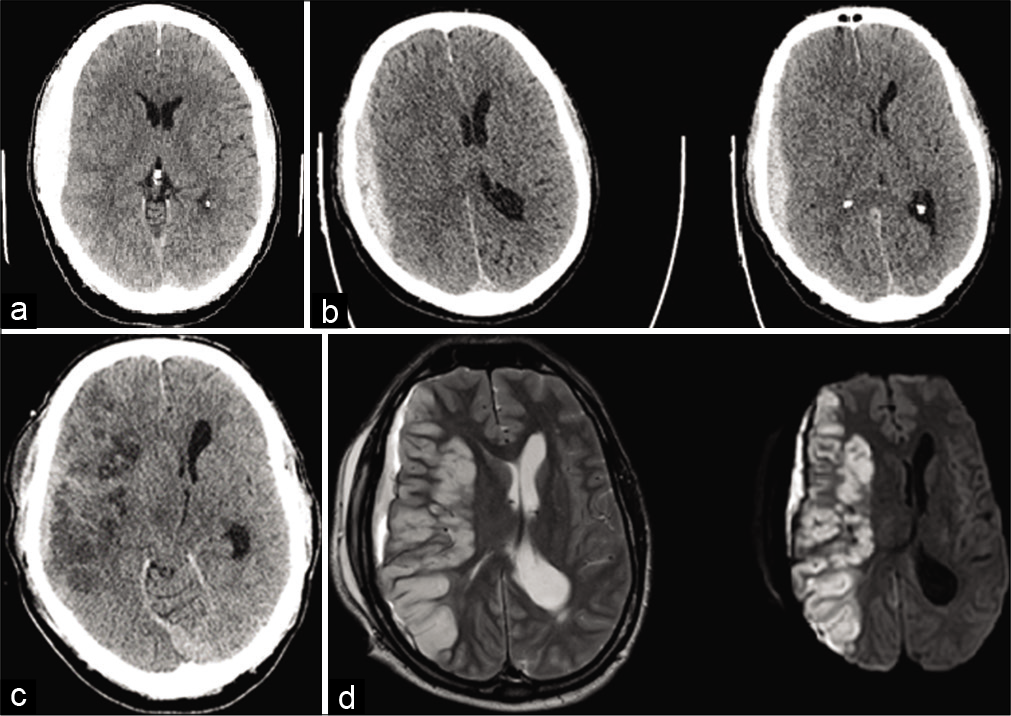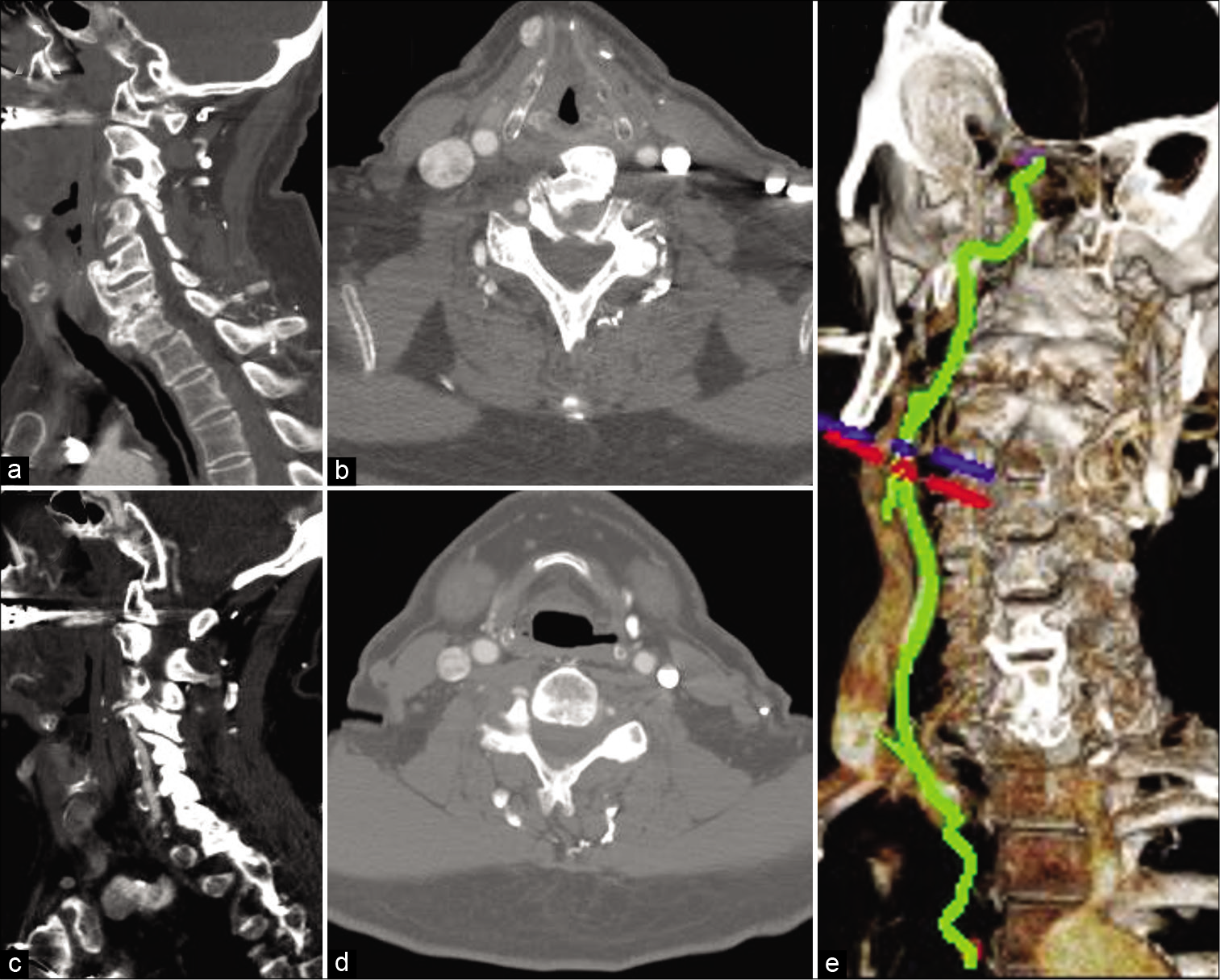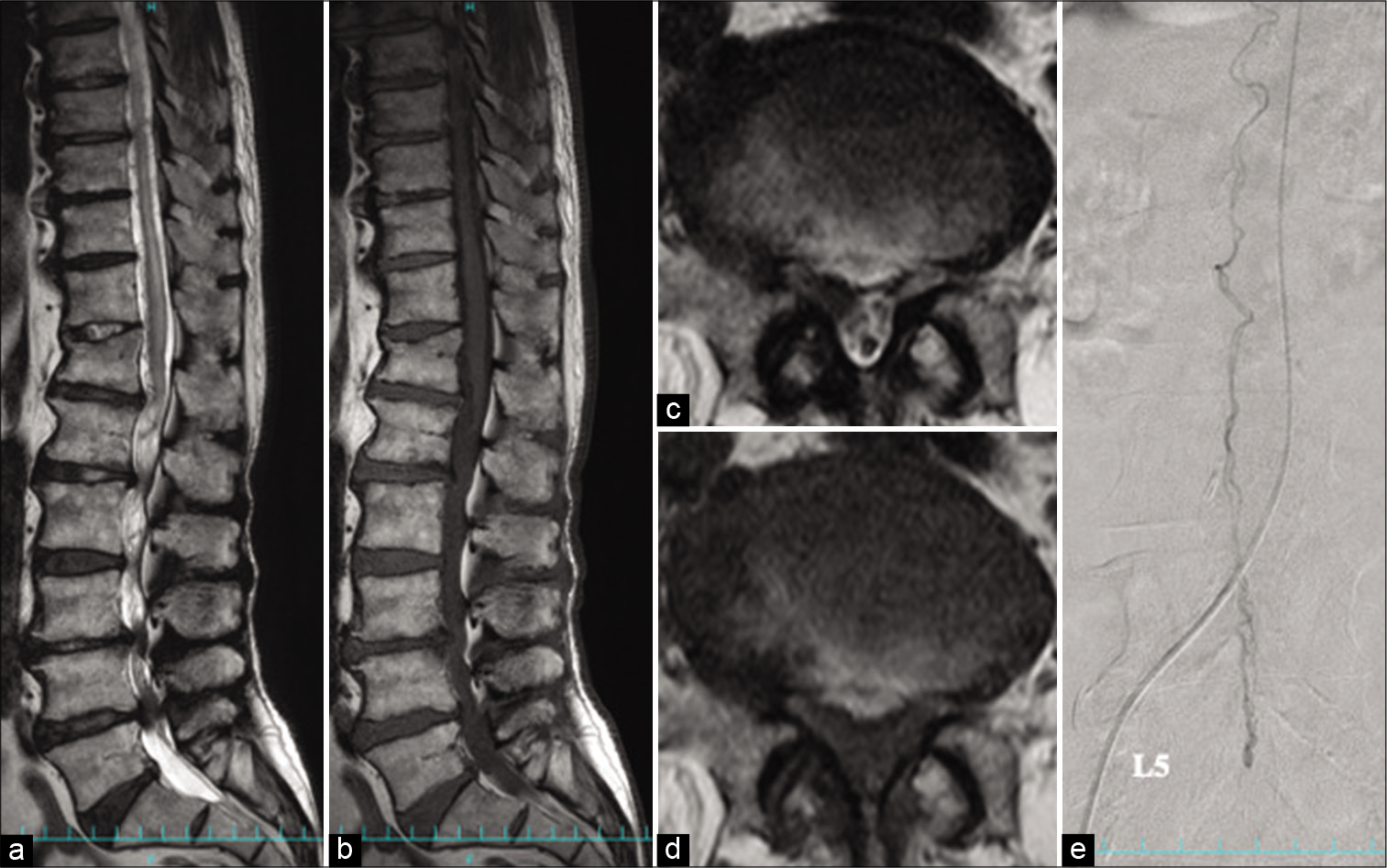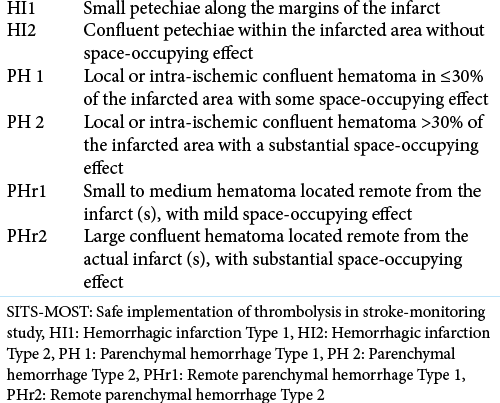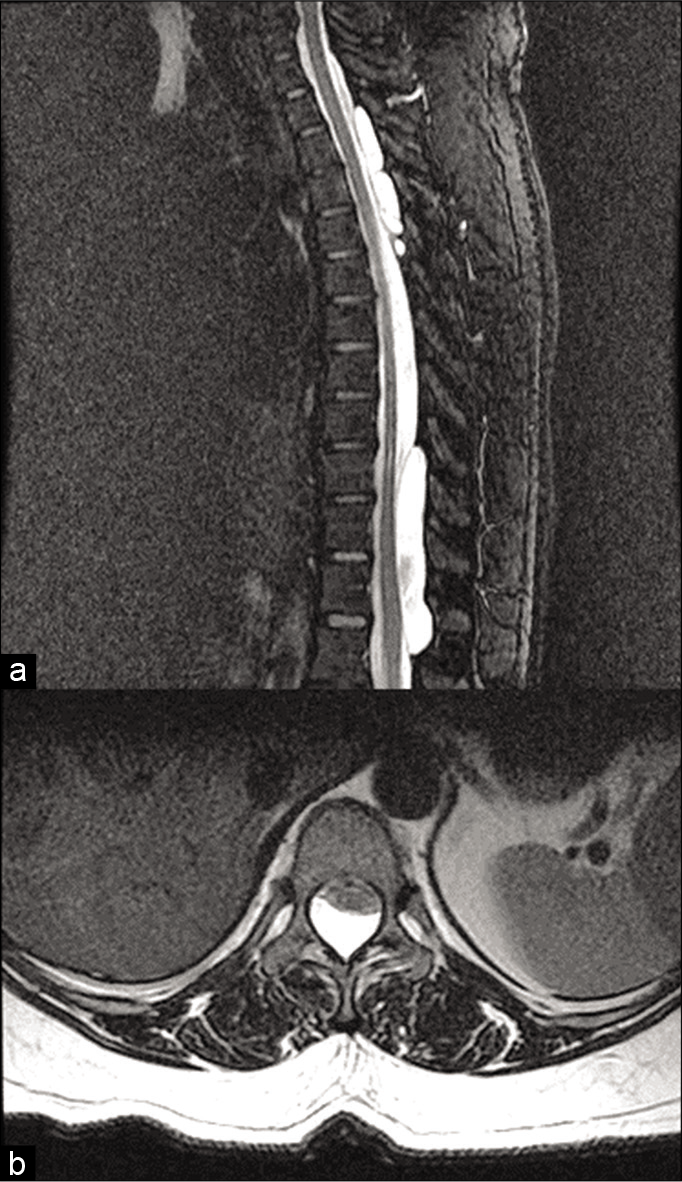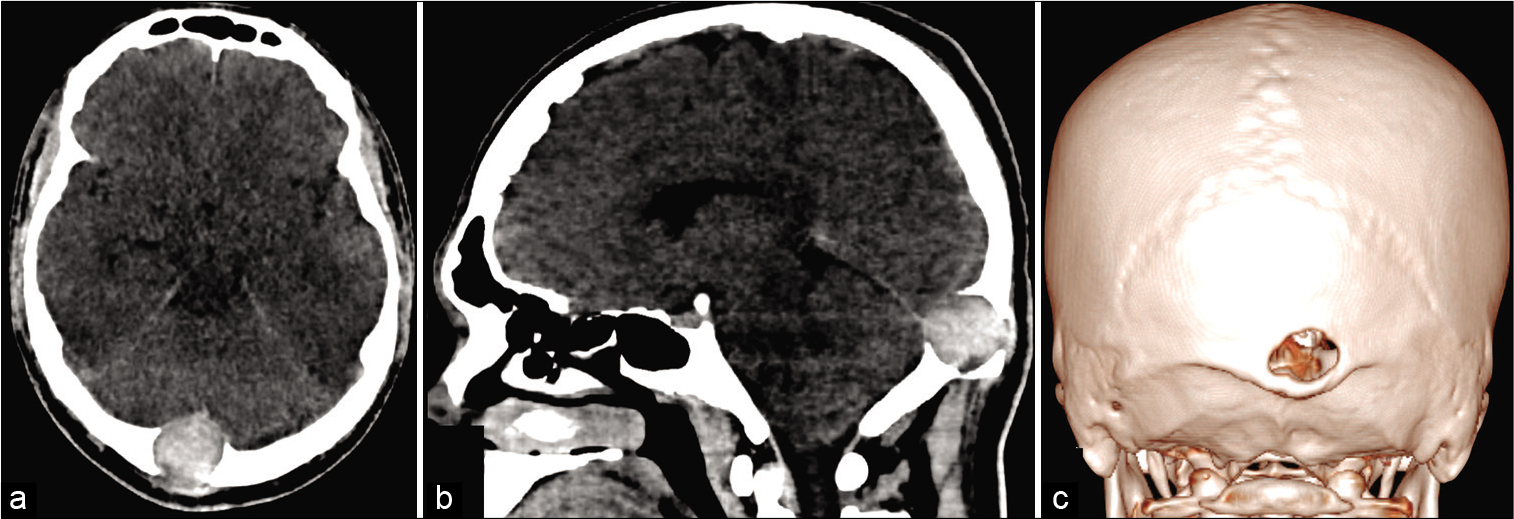Following the footprints of pioneers on neurosurgery in Iraq: Abdul Hadi Al-Khalili
Date of publication: 17-Mar-2021
Emergent carotid artery stenting for cervical internal carotid artery injury during carotid endarterectomy: A case report
Date of publication: 17-Mar-2021
Background: Carotid endarterectomy (CEA) has been the standard preventive procedure for cerebral infarction due to cervical internal carotid artery stenosis, and internal shunt insertion during CEA is widely accepted. However, troubleshooting knowledge is essential because potentially life-threatening complications can occur. Herein, we report a case of cervical internal carotid artery injury caused by the insertion of a shunt device during CEA.
Acute traumatic sequestrated thoracic disc herniation: A case report and review
Date of publication: 17-Mar-2021
Background: Pure sequestrated thoracic disc herniations secondary to a traumatic event are rare.
Invisible compression, anterior fossa tumor causing trigeminal neuralgia
Date of publication: 17-Mar-2021
Background: Trigeminal neuralgia secondary to posterior and middle fossae tumors, whether ipsilateral or contralateral, has been well described. However, this disabling disease has never been reported in the context of anterior fossa neoplasms.
Malignant middle cerebral artery infarction following subacute subdural hematoma: A case report and literature review
Date of publication: 17-Mar-2021
Background: Subacute subdural hematomas (ASDH) are only treated surgically when they cause mass effect significant enough to give symptoms. Rarely, sub-ASDH may cause enough pressure to result in a malignant middle cerebral artery (MCA) territory infarction. Decompressive craniectomy (DC) is the last resort to reduce intracranial pressure following malignant MCA infarction. Herein, we review the literature and describe a case of MCA/posterior cerebral artery (PCA) territories infarction following drainage of a sub-ASDH that was treated with DC with good outcome.
Fusion for subaxial bow hunter’s syndrome results in remote osseous remodeling of the hyperostotic growth responsible for vertebral artery compression
Date of publication: 17-Mar-2021
Background: The authors present a previously unreported case of a patient with diffuse idiopathic skeletal hyperostosis (DISH) who developed bow hunter’s syndrome (BHS) or positional vertebrobasilar insufficiency. In addition, the authors demonstrate angiographic evidence of remote osseous remodeling after segmental fusion without direct decompression of the offending bony growth. BHS is a rare, yet well established, cause of posterior circulation ischemia and ischemic stroke. Several etiologies such as segmental instability and spondylosis have been described as causes, however, DISH has not been associated with BHS before this publication.
Spinal arteriovenous fistula in the lipoma of the filum terminale: A report of two cases and literature review
Date of publication: 17-Mar-2021
Background: Filum terminale arteriovenous fistulas (FTAVFs) are rare and their pathogenesis remains unknown. The authors report two cases of FTAVF that arose in the lipoma of the filum terminale.
Types of intraparenchymal hematoma as a predictor after revascularization in patients with anterior circulation acute ischemic stroke
Date of publication: 17-Mar-2021
Background: Intracranial hemorrhage after revascularization for acute ischemic stroke is associated with poor outcomes. Few reports have examined the relationship between parenchymal hematoma after revascularization and clinical outcomes. This retrospective study aimed to investigate the risk factors and clinical outcomes of parenchymal hematoma after revascularization for acute ischemic stroke.
Multiple extradural spinal arachnoid cysts: A case report
Date of publication: 17-Mar-2021
Background: Extradural spinal arachnoid cysts (SACs) rarely cause neural compression and disability.
Acute-onset diplopia from intracranial hypertension due to torcular herophili obstruction by an hemorrhagic intradiploic epidermoid cyst
Date of publication: 17-Mar-2021
Background: Epidermoid cysts are benign slow-growing congenital lesions, constituting approximately 1% of all cranial tumors. Most of these lesions are located intradurally, while about 10–25% of them are located within the diploic spaces. Intradiploic epidermoid cysts are usually discovered incidentally and may remain asymptomatic for many years, but in rare instances, they may grow intracranially and produce brain compression. Sometimes, intradiploic epidermoid cysts may occlude the main cranial venous sinuses causing intracranial hypertension.


